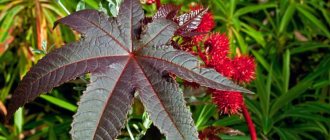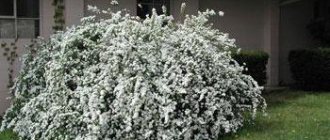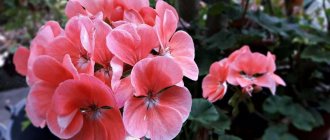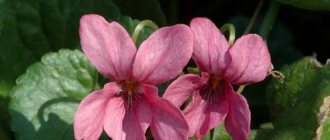Hazel or hazel (Corylus) is a representative of the Birch family. This genus is represented by deciduous trees and shrubs. It unites approximately 20 species. They are found naturally in North America and Eurasia. At the same time, in coniferous-deciduous forests they form undergrowth. The most popular type among gardeners is hazelnut or common hazel. The following cultivated species are often called hazelnuts: large hazel, Pontic hazel and common hazel. The hollow is one of the oldest cultivated plants in Europe. For many centuries, hazel has been cultivated in Spain, France, Great Britain, Turkey, Italy and Germany. Hazel fruits appeared on the territory of Russia in 1773 in the process of exchange for velvet and leather. The word hazel comes from “leska”, which means hazelnut.
A little history
Archaeologists claim that the plant was known to mankind long before the advent of fire. For example, hazelnuts appeared in the Caucasus more than 6,000 years ago.
As now, in those distant years, hazel nuts were used both as a tasty delicacy and to quickly satisfy hunger. Moreover, nuts do not require very difficult storage conditions.
In Russia, cultivated hazel appeared thanks to the efforts of I.V. Michurin; it grew wild and continues to grow in ordinary forests, enjoying the constant popularity of local residents.
But even today it is almost impossible to find hazelnuts in ordinary summer cottages, and there is no mention of growing nuts on an industrial scale.
Hazel and hazelnut: what is the difference
The main criterion for distinguishing hazel and hazelnut is the form of growth. Hazel is usually called a wild hazelnut, and hazelnut is its cultivated form .
Description of hazel
Hazelnuts growing in the wild are most often a shrub . Its voluminous, rounded crown is formed by many densely branched shoots growing directly from the root.
The fruits are quite small. It is by the size of the fruit that it is customary to distinguish between wild and cultivated forms.
Description of hazelnuts
Hazelnuts, or cultivated nuts, are distinguished by larger leaf blades and, of course, the size of the fruit.
They are noticeably larger than those of wild relatives. The hazelnut trunk is also more voluminous, the plant looks more like a tree.
Useful properties of hazel
Hazelnut fruits contain a huge amount of vitamins and minerals vital for the human body. Nuts quickly satisfy your hunger, so they can be a healthy snack during the day. They are used in cooking, pharmaceuticals, and cosmetology.
Walnut wood is considered a fairly valuable material for the production of furniture and tools, although most often small trees are used to produce garden tools, and flexible branches are used to create wickerwork or openwork decorative items.
The plant itself will be a pleasant decoration for any summer cottage. It:
- Perfectly protects the area from dust and gases from the street;
- It pleases with rich green foliage, and in the fall it turns into a bright yellow spot, elegantly standing out among the dull grayness.
Hazel often strengthens the slopes of ravines, and it itself miraculously fills areas of felling and fires, hiding all traces of destructive human activity in just a few years.
Plant distribution
Photos of the common hazel tree often show that it grows next to oak or coniferous trees. Its favorite habitats are deciduous, pine and spruce forests, as well as forest-steppe zones of Europe and South Asia.
In nature, hazel is found in a vast region, reaching St. Petersburg in the north and the Urals in the east. In the Caucasus, for several hundred years, this shrub, crossed with the Asia Minor variety of Pontian hazel, has been cultivated to produce hazelnuts.
The fruits of this variety are slightly larger in size than forest fruits, but contain fewer nutrients.
Description of hazel
Hazel belongs to the Birch family. In Russia, it does well in the North Caucasus and Central Russia.
Most often it grows as a shrub, reaching a height of 1.5-2 meters, sometimes, mainly after human intervention, it becomes a tree, capable of growing up to 7-10 meters.
- Flowers appear in late March-early April even before the first leaves appear.
- The fruiting period for a wild tree begins in 6-8 years; cultivated plants can produce a harvest already in the fifth year of life.
- From one hazel you can collect up to 10 kilograms of nuts, although such abundance will not be available every year.
- After abundant fruiting, hazel can rest for several years.
The fruits grow in 3-4 pieces, each nut weighs about 5 grams.
The plant has a powerful root system, but all the roots are located close to the surface, so the hazel itself will not be able to obtain adequate food for itself without the help of its owners.
What does hazel look like?
The vast majority of hazel species are deciduous shrubs with large, rounded leaves of a magnificent rich green color. Hazel gravitates toward the warm, moist, fertile soils of broad-leaved forests and gets along well with their permanent residents: oaks, elms, maples, dominating the undergrowth and often forming a solid wall. Wild hazel species are branched shrubs with a large number of stems coming from the rhizome. They reach a height of 3-5 meters. Bushes can reproduce vegetatively (offshoots and cuttings) or by seeds - nuts. They begin to bear fruit in the 6-7th year with seed propagation, and in the 4th year with vegetative reproduction. In summer, a hazel bush can be easily identified by its leaves, which have an oval shape and are decorated along the edges with small teeth and a sharp tip. The hazel leaf has a slightly rough texture to the touch.
Basically, the hazel crop is a shrub 5–6 meters in height with smooth bark, the color of which varies from grayish to terracotta-brown. Young shoots are usually colored gray-green, interspersed with small yellowish specks. Young shoots are similar in appearance to linden shoots, differing only in their rather dense pubescence. Hazel shoots can easily be confused with elm. Both their leaves and bark are very similar in color and texture. But there are also differences. The elm, like a real tree, always has only one trunk, and the young growth of hazel is multiple, which is typical of a shrub. In addition, hazel has oval gray-green buds, while elm has reddish and pointed buds.
Selecting a location
Hazel is not particularly demanding for cultivation, but the choice of planting site must be approached as responsibly as possible.
- The ideal area would be a place on the south or west side, where there is a lot of light and there are no drafts or strong winds.
- Groundwater should lie below 1.5 meters from the surface, but lowlands in which water accumulates during floods or heavy rains will also not please the plant.
- So does heavy soil. The ideal soil is loose, fertile soil with neutral or slightly increased acidity.
There should be at least 4-5 meters to the nearest trees.
Red-leaved form of hazel
Such forms of hazel are very impressive due to the unusual color of the foliage and are a multi-stemmed, tall (up to 4 meters) shrub with large dark purple leaves, a red fruit wrapper and a pink nut kernel. Red-leaved hazel is an extremely ornamental shrub. But he is a true southerner, and the harsh winters of temperate Russian latitudes are destructive for these types of hazel. However, winter insulation gives good results: the plant survives, but does not bloom or bear fruit. Reserving only a decorative function, it creates a unique ambience on the site.
Pit preparation
The planting pit is prepared approximately a month before the expected date of planting of the new inhabitant of the site. When planting hazelnuts in the spring, it is advisable to prepare the hole in the fall.
- If there is light and fertile soil, a depth of 50 centimeters will be sufficient; if the soil does not have high nutritional properties, the depth is increased to 80 centimeters.
- Fertile soil is poured into the hole; rotted manure, ash or superphosphate can also be added there. It is advisable to put a few handfuls of earth pulled out from under wild hazel on top. It contains beneficial fungi that help the seedling to take root faster in a new place.
The plant is placed on a small mound inside the hole and carefully covered with fertile soil. The soil is compacted, the tree is tied to a strong stake, and the planting site is watered abundantly.
One plant will require at least 40 liters of water. When the moisture leaves, the tree trunk circle is covered with mulch, which will help retain moisture for a long time.
For better pollination, it is recommended to plant several hazels in one area at once. And it is advisable to use different varieties for planting.
Varieties of hazelnuts
There are more than 20 species in the hazelnut genus. The diversity of cultures of this kind is simply amazing. Plants have significant differences, but almost all tolerate frost well and are distinguished by their longevity.
Red viburnum is a shrub or tree - description
Hazel grows well in any type of soil; it is unpretentious, but it is better to bear fruit in fertile soil. The nut loves moisture, but its excess can harm the plant. In an open, sunny area, hazel will be decoratively attractive and produce a good harvest. Among all the types of hazel, there are several of the most common.
Common hazel, or hazelnut
The common hazel variety reaches a height of 6 m. The tree has an extremely attractive crown. What distinguishes common hazel from classical varieties is its flowering, which begins before the leaves bloom. Bees are especially interested in this shrub.
Note! When other trees are just beginning to prepare to bloom, hazel is already in full bloom and provides nectar to insects.
Bear nut, or tree hazel
Bear nut, or tree hazel, stands apart among all types of wild hazel. This plant grows up to 20 m high. The diameter of the walnut crown is 8 m. The slender and attractive trunk is a distinctive feature. The tree is recognized by its wide pyramidal crown shape. During the season it gives a big increase. The plant tolerates drought, shaded areas and frost well.
Hazelnut
Pleasant neighborhood
In order for the plant to grow better, it is recommended to plant lupine, oats, vetch, and mustard in the tree trunk circle.
These plants, when mowed, will become an excellent mulch layer, helping to make the soil more loose and provide the hazel with useful substances.
Pests and diseases
Hazel can be attacked by the following pests:
- kidney mite;
- aphid;
- nut weevil;
- hazelnut barbel;
- nut leaf beetle.
Regular treatments with insecticides will help in the fight against parasites.
The following diseases are typical for hazel:
- powdery mildew;
- rust;
- white rot.
Hazel processing
The best way to prevent diseases is to follow the rules of agricultural technology and regular pruning , accompanied by fungicide treatments.
Hazel tree care
Hazel is not too demanding in terms of care. For the first time after planting, it is recommended to shade the seedling from too active sun. In the future, the sun's rays will only please the plant.
But the plant will feel great in a little shade.
- Watering. It is recommended to water hazel once a month, but these recommendations do not take into account weather conditions, so in hot periods the frequency of water application is increased, and in rainy summers it is reduced. At least 40-60 liters of water are poured under an adult plant at a time; for young seedlings this figure can be halved.
- Feeding. The plant is usually fed three times per season: in the spring, adding nitroammophoska, in June, using wood ash, in July, again using nitroammophoska. Once every three years, humus or rotted manure is added under the plant.
- Loosening and weeding. Both operations are performed as needed. Additional loosening is recommended about a day after watering or rain.
- Trimming. The shoots are trimmed constantly as they appear. In the spring, sanitary pruning is carried out, removing broken, damaged, dried, diseased branches, as well as branches growing inside the crown. Adult plants that have reached the age of 20 years already need rejuvenating procedures. In this case, one branch whose age exceeds seven years is pruned annually. For adult hazels that already refuse to bear fruit, you can cut off almost all the branches, leaving a few shoots with 2-3 strong buds. To form a tree, only one most powerful shoot is left.
- Wintering. Young plants (up to three years old) require covering with special materials; the flexible branches of the bush can simply be bent to the ground and covered with spruce paws. In this case, thin branches will be protected not only from the cold, but also from the wind, and therefore will not break and will more easily survive a difficult period. Mature plants can cope well with the cold on their own.
Hazel tree propagation
There are several ways to breed hazelnuts. The easiest way is to buy a ready-made seedling from a reliable company, but for those who want to experience the whole process, you can use:
- By layering;
- Cuttings;
- Dividing the bush;
- Seeds.
But the last option is considered the most unreliable and difficult.
Cute hazel will be a wonderful decoration for the site and a source of tasty and healthy fruits that will certainly appeal to all household members.
Reproduction and grafting
In nature, tree hazel reproduces by seeds and root shoots. To speed up the restoration of the tree's population, nurseries and nature reserves are cultivating and distributing seedlings. Three growing methods are used: seed, vegetative, grafting.
Seed method
When sowing in spring, stratification is necessary. Growing by seeds has disadvantages :
- a small percentage of germination: fruits die from frost, rodents, mice;
- loss of genetic qualities of the parent tree.
Vegetative
Garden farmers prefer propagation by arc layering or root suckers.
In the first case, one-year-old shoots are bent down, placed in grooves 15 cm deep, covered with earth, and watered. By autumn, the buds give rise to roots, and the shoot section is planted in a prepared place. The second method is used by young growth that has grown from roots at a distance of a meter. It is separated with a sharp ax and planted separately.
Vaccinations
As a result of grafting hazelnuts onto bear nuts, the fruits grow larger, resulting in a more winter-hardy, productive hybrid. Experienced gardeners call July the best month for grafting. The algorithm is simple, but requires skills:
- You need a ripe hazelnut bud along with a section of a branch.
- At a height of 1-1.5 m, an incision is made on the trunk of the bear hazel and a bud is inserted into it.
- Straighten the bark and bandage the junction.
If after half a month the wound heals, everything worked out.
Breeders have improved the fusion process by placing the grafting site in a polypropylene tube with warm air. Drying out is prevented with garden varnish. The survival rate under such conditions reaches 98%.











